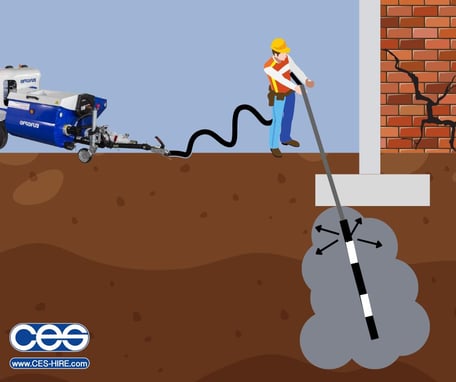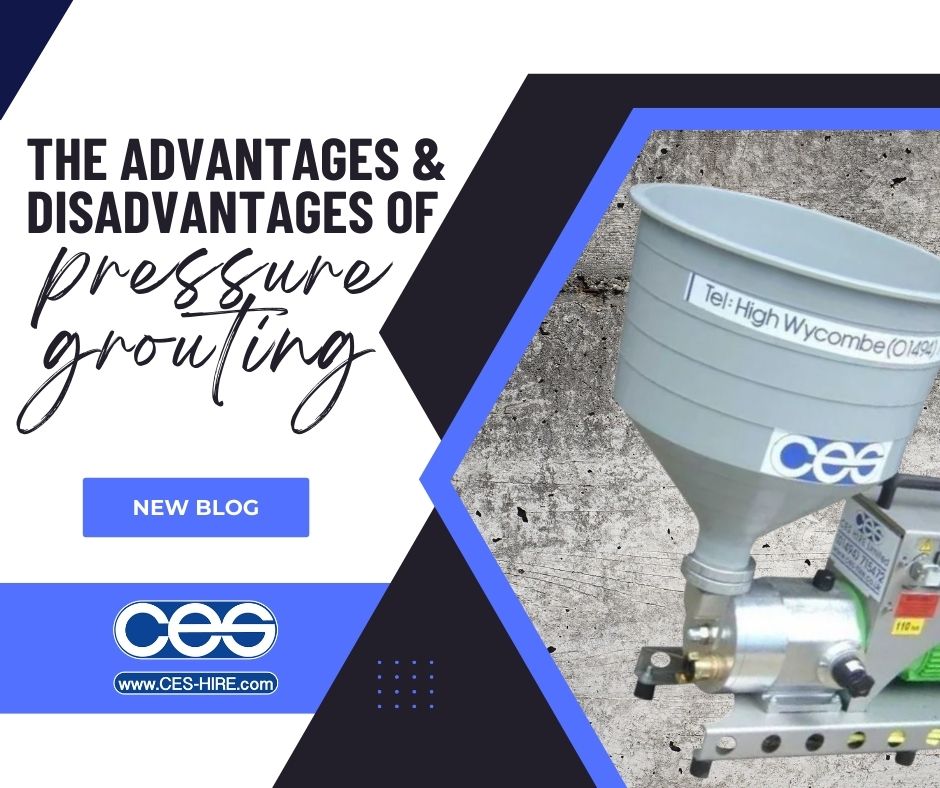Grout Pumps
The Power Of Pressure Grouting: Advantages & Disadvantages Explained
Pressure grouting is a type of injection grouting which fills a void (small or large) with a pumpable material which will then provide strength, durability and waterproofing qualities to the finished product. Find out more about grout pumps here>
The Benefits of Pressure Grouting
Pressure grouting is a great way of stabilising groundworks, underpinning foundations, filling voids and strengthening walls, bridges and historical structures (find out more about pressure grouting itself here >). It has many advantages which we’ll explore below.
- This method of grouting (in most cases) causes minimal disruption to the landscape, surrounding soils and nearby structures
- Compared to the alternatives of concrete piling or removal and replacement of concrete, pressure grouting is a much cheaper alternative
- Pressure grouting can be carried out in places where access is difficult or space is limited
- This process can be used on most materials and even with more delicate installations
- Compared with piled solutions, which has a smaller support area, pressure grouting expands to maximise the area of support and ground stabilisation
- It does not interrupt facility operations
- Pressure grouting won’t cause vibrations and therefore minimises structural damage
- It can be applied next to existing foundations or adjacent to existing walls
- It is easy to apply and fast setting
- It is a well-suited solution for repairing foundations of old constructions however you should take care not to over-pressurise as this can cause severe damage. We would advise to fit a pressure gauge to your machine or opt for a more carefully controlled hand-pump
- Pressure grouting provides excellent strength and support to stabilise groundworks and foundations as well as strengthening weakened structures such as old bridges, walls or tunnels

The Downsides of Pressure Grouting
- It is not so well-suited for coarse-grained or softer soils which have shorter self-support times and an increased risk of soil movement
- With small repair jobs it is a less cost-effective solution however on large projects this is the best and cheaper option
- Under pressure, the grout will always find the easiest route through the ground or structure. If there are cracks present this could mean the grout entering areas that it is not wanted or even working its way to the surface where it could cause stains and challenging cleaning operations.
- Pressure grouting can very easily seep into areas that it is not wanted if there are unknown cracks. This can be particularly problematic if it enters drains or water systems for example
- It is very important to control the grout being injected as it is entering the ground at a high-pressure and can cause damage if too much material is injected and cause structural damage instead of the intended stabilisation.
Grout Pumps at CES
Grout pumps can be used for many different projects so it is important that you seek guidance when selecting the correct machine for your material. The team at CES will be more than happy to help advise you on the right grout pump to hire or purchase. Hand operated manual pumps such as the Airplaco HG-9 Hand-operated Grout Pump are convenient since they are lightweight and compact so will fit into the smallest space. They do not need a power source and are controlled by the operator which makes them ideal for smaller more intricate jobs. Alternatively you could opt for an electric machine such as the InoBeam M8 Peristaltic Grout Pump, Euromair DropPro 8P and the Euromair Compact Pro 30. For larger jobs our Diesel range could be the option you’re looking for with machines such as Putzmeister models like the SP11 LMR and TMR or the Euromair Compact Pro 80. Find out more about selecting the right grout pump for your project here >

